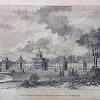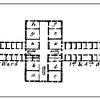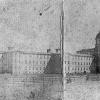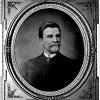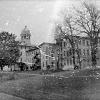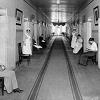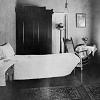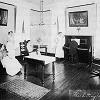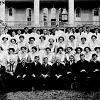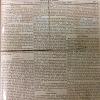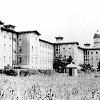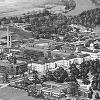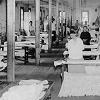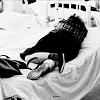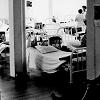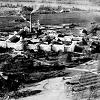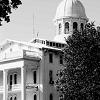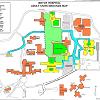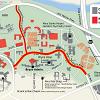Curiosity |
|
A PHP Error was encountered
Severity: Notice
Message: Only variables should be passed by reference
Filename: pages/site.php
Line Number: 13

- Also Known As:Alabama Insane Hospital, Alabama State Hospital for the Insane
- Genre:Kirkbride Plan, Psychiatric Hospital
- Comments: 275
- Built:1853
- Opened:1859
- Age:172 years
- Closed:2009
- Demo / Renovated:N/A
- Decaying for:16 years
- Last Known Status:Being demolished or renovated (Cleanup and preservation work is being performed by the university)

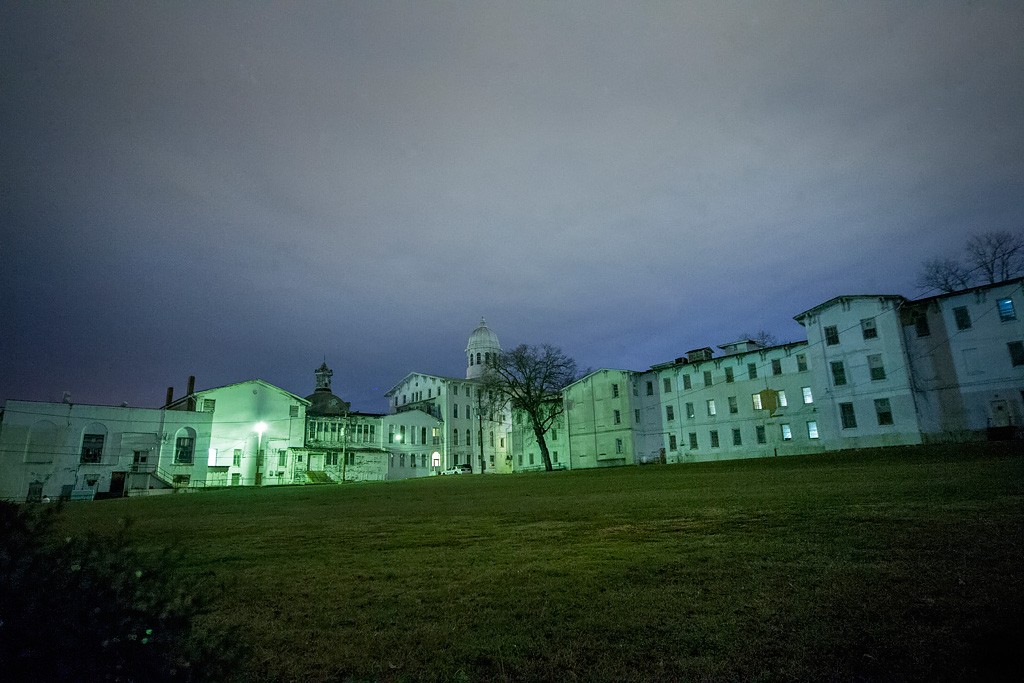
Photo © 2007 Tom Kirsch, opacity.us
Bryce Hospital History
Dorthea Dix, one of the most important mental health advocates of the 19th century, lobbied for the establishment of psychiatric hospitals in states where the mentally ill were otherwise sent off and abused in prisons and almshouses. Her efforts in the state of Alabama were facilitated by Governor Henry Collier and Senator Robert Jemison Jr. to pass an act to found a state asylum in Tuscaloosa, which was eventually passed in 1852. A sum of $100,000 was appropriated to construct the Alabama Insane Hospital (AIH) on 326 acres; the layout of the building would be based on Dr. Thomas Kirkbride's linear plan. The Kirkbride plan was based on "moral treatment" where compassion and respect for the insane were embraced by the architecture. Samuel Sloan, an incredibly popular architect at the time, was commissioned to design the building based on Kirkbride's recommendations. The result - a four story administration building flanked by three stepped-back wings on each side in Italianate style - is considered to be the most fully realized example of Kirkbride's linear plan (other Kirkbride buildings had deviated from his original design by varying amounts). The six wings were separated by gender on either side of the administration building, which was adorned with a massive dome, providing panoramic views of the countryside. In 1865, the hospital staff watched Union troops burn the nearby University of Alabama from this vantage point. Construction on the massive building began in 1853, but was interrupted by the lack of funding until it was completed in 1859. When the hospital opened in 1861, it was the first building in Tuscaloosa with gas lighting and central heat.
Dorthea Dix elected a physician named Dr. Peter Bryce to become superintendent of the new hospital, who made for an unusual choice as state hospital superintendents were not physicians during that era. Dr. Bryce had been an assistant physician at the South Carolina State Hospital before moving out to Tuscaloosa to run the Alabama Insane Hospital. He was a major advocate moral treatment, and highly discouraged the use of shackles and straitjackets, until they were completely banned at the hospital in 1882, a first in the field. Patients were even encouraged to write their own newspaper, called The Meteor, which was in publication from 1872 to 1881. Dr. Bryce sought to keep up with the emerging trends in the moral treatment movement, and entertainment halls were being highly promoted, of which the Kirkbride building did not have. In 1871, an amusement hall was constructed on top of the original boiler house, where patients could enjoy drama plays, tea parties, and dances. This facility was not attached directly to the building however, and in 1879 Dr. Bryce had the two buildings connected by a structure designed by H.A. Master, which included a domed rotunda that functioned as a patient library, and additional kitchen space on the ground floor.
Dr. Bryce also improved the hospital by having new gardens and fencing installed, as well as planting trees and other flowering plants around the building. The original gas lighting was only partially installed before the outbreak of the Civil War and never functioned at full capacity, so the system was overhauled in 1876, which actually used a coal mine located underneath the hospital to generate the fuel for the hospital's gas and heat. The mine shaft ran from the rear of the dome to the Warrior River, but was permanently sealed after an accident in 1902.
Dr. Bryce's focus on treatment was heavily based on social support and occupational therapy, where patients would work the farm, sew, and make crafts which closest resembled the work the patient performed before being committed or voluntarily admitted. This form of labor eventually became a necessity for the hospital, for the funding of the institution was not accounted for after four years of opening, and the AIH required the food worked from the farm and revenue from the crafts sold to support itself. Funding woes led to more problems, including overcrowding. By 1875, Dr. Bryce lamented on how the hospital had transformed from being named one of the five best mental hospitals in the world to a custodial warehouse for the mentally ill. In 1881, an appropriation of $100,000 made it possible to build large wings on either side of the Kirkbride building, which expanded the hospital's capacity by 350 patients. Although necessary, the additions destroyed the original intent of Kirkbride's plan, which stated that no hospital should accommodate over 250 patients. After Dr. Bryce's death and burial on hospital grounds in 1892, the facility was named in his honor eight years later as Bryce Hospital.
Dr. James Searcy succeeded Dr. Bryce, and took control of the hospital which was by now overflowing with patients. Dr. Searcy was a proponent of the eugenics movement, which swept through the U.S. medical field until its adaptation by the Nazi party led to its demise. Patients at the AIH were sterilized for the next fifteen years, and he also lobbied for legislature to pass a compulsory sterilization law to reduce mental illness. The problem of overcrowding continued to grow steadily however, and when Dr. Partlow's tenure began in 1919, he sought to alleviate the problem by establishing satellite facilities. The Alabama Home for Mental Defectives (later known as Partlow State School) was created in 1923 to treat people with intellectual disabilities instead of housing them with Bryce Hospital's psychiatric population, and the State Farm Colony for Negroes (later known as Jemison Center) was established in 1939 to treat African American patients, as they were not permitted in Bryce's Kirkbride building during the Jim Crow era.
These facilities would not make up for the lack of funding however. A 1949 report found the daily population of Bryce Hospital at 5,732 residents, giving it the largest patient load of any state in the nation, but only having ten full-time physicians on staff. Conditions at the hospital turned from bad to abysmal through the 1960s, where patients were given virtually no treatment in overcrowded, understaffed, and filthy living quarters. Daily food allowances had reached only fifty cents per person. A crisis point was reached in 1970, when Bryce Hospital had 5,200 patients and only three psychiatrists; it was ranked last among all states in funding for mental health. A reporter for the Montgomery Advertiser likened the living conditions to a Nazi concentration camp. To add to the problems, a cigarette tax earmarked for mental health treatment was cut, laying off one hundred Bryce employees.
Finally in 1970, a fifteen year old boy named Ricky Wyatt became the named plaintiff in a class-action lawsuit, famously known as Wyatt vs Stickney. Having been labeled as a "juvenile delinquent," he was housed in intolerable conditions at Bryce without being indicated with a mental illness. With his aunt, a former staff member, they testified about the horrible conditions inside the hospital, which resulted in a court-ordered basis for minimum standards for the care of people with mental illness or intellectual disability residing in an institutional setting. These standards became a nationwide model known as the Wyatt Standards. Because Bryce Hospital could not provide the standards of this prescribed care due to lack of funding, the state had to release almost half the patients being treated there.
Other mental health facilities in Alabama were cited for repeated violations of the Wyatt Standards, and during the 1980s and 1990s all of the state's facilities were placed under federal supervision. In this period, the Taylor Hardin Secure Medical Facility was established in 1981 at the Bryce Hospital campus as a forensic psychiatric hospital and substance abuse clinic. The Mary Starke Harper Geriatric Psychiatry Hospital was also established on the campus in 1996.
The University of Alabama acquired the Bryce Hospital in 2009, when patients were moved to a new facility in Tuscaloosa. As part of the purchase agreement, the university will pay for environmental cleanup and historic preservation of the site. Unfortunately, the outermost east and west wings have been demolished in 2015.

